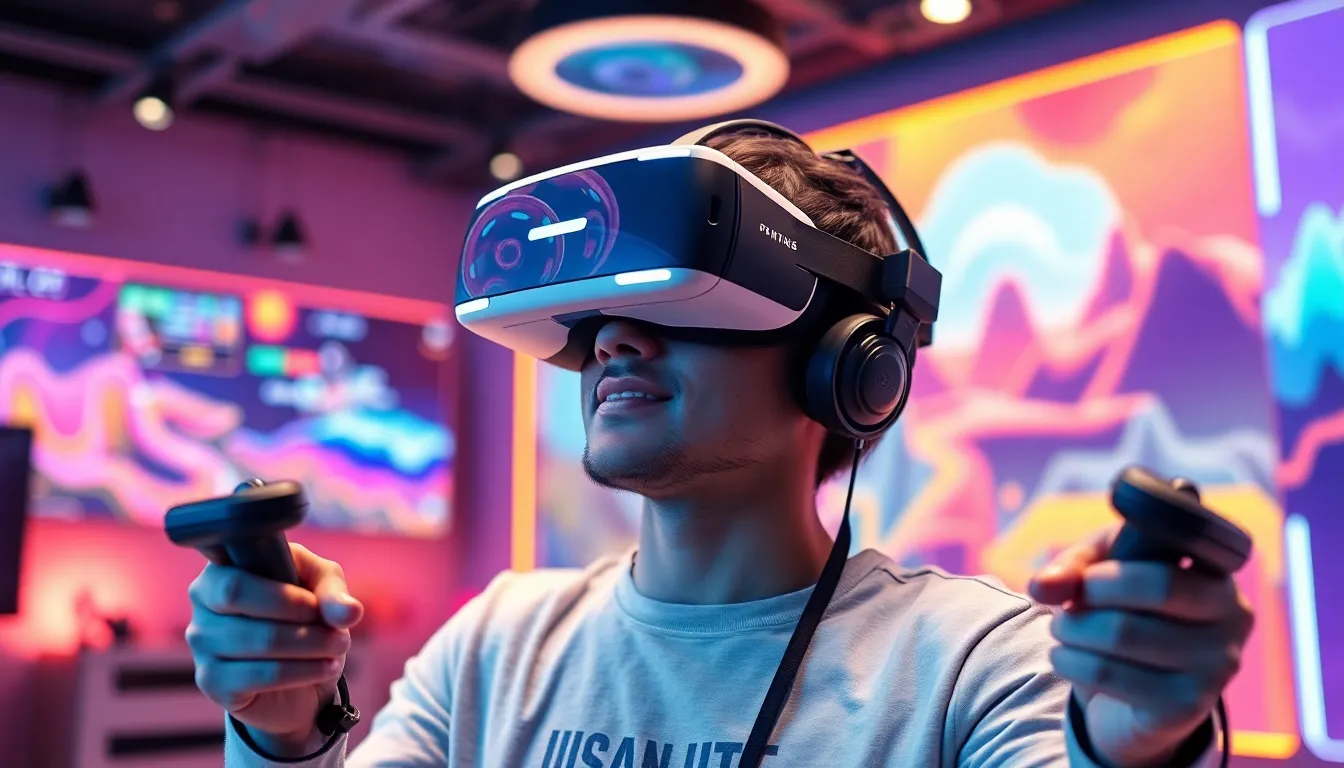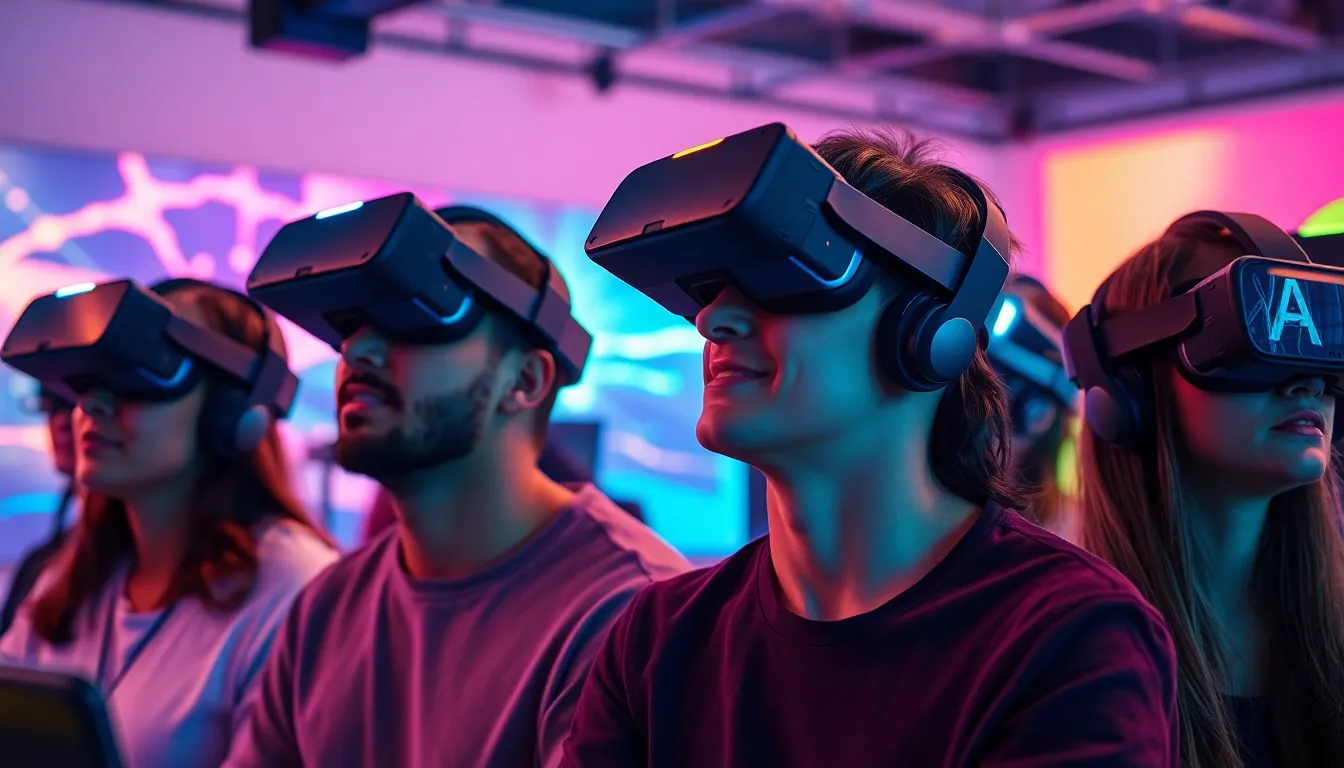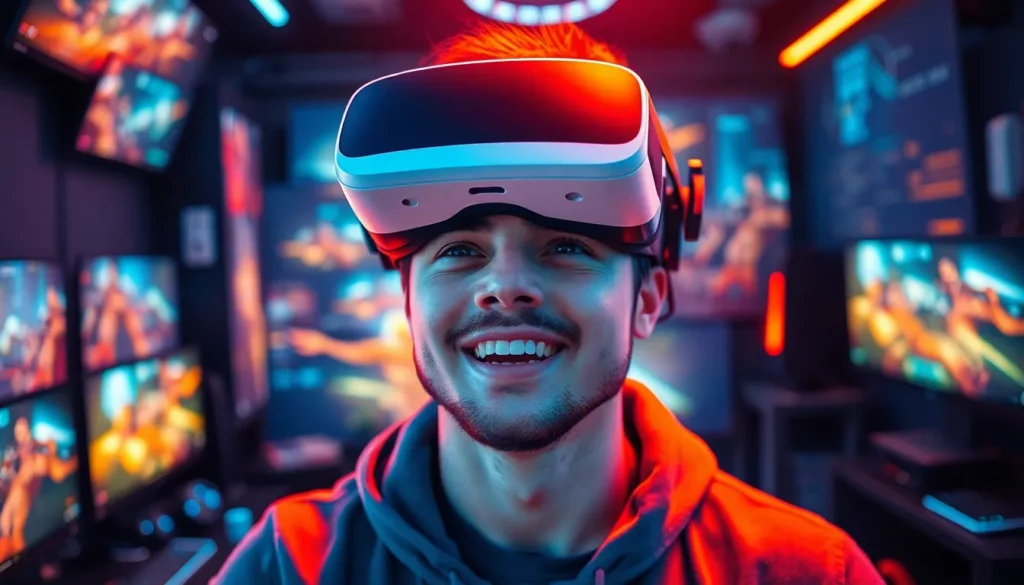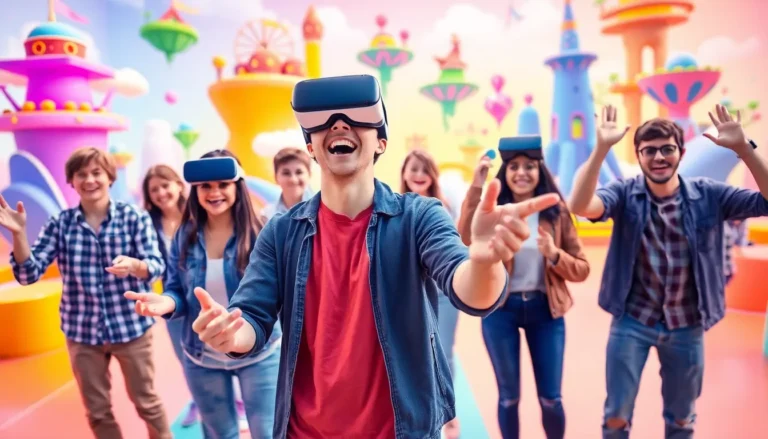Table of Contents
ToggleGaming isn’t just about smashing buttons and yelling at the screen anymore. With emerging technologies revolutionizing the industry, players are diving into experiences that feel more like living in a sci-fi movie than just playing a game. From virtual reality that’ll have you dodging dragons in your living room to artificial intelligence that learns your every move, the future of gaming is packed with jaw-dropping innovations.
Overview of Emerging Technologies in Gaming
Advancements in gaming technologies continue to reshape player experiences. Virtual reality (VR) immerses users in detailed environments, engaging all senses and enhancing interaction. Gamers can now explore breathtaking landscapes, interact with characters, and navigate worlds that feel remarkably real.
Artificial intelligence (AI) plays a crucial role in modern gaming. It personalizes gaming experiences by analyzing player choices and adapting gameplay accordingly. Enhanced NPC behavior results from AI improvements, making in-game interactions more dynamic and realistic.
Cloud gaming represents another significant innovation. Players access games from remote servers without needing expensive hardware. This shift facilitates seamless gaming experiences on multiple devices, expanding accessibility and appeal.
Blockchain technology introduces new possibilities through decentralized gaming ecosystems. Players can trade in-game assets securely, ensuring ownership and authenticity. This advancement revolutionizes how gamers perceive value and investment within digital environments.
Augmented reality (AR) blurs the line between virtual and real worlds. With AR, players interact with digital elements superimposed on their physical surroundings. This technology transforms ordinary settings into interactive play areas, enhancing social play and engagement.
Additionally, advancements in graphics and processing power contribute to lifelike visuals. Enhanced fidelity captivates players, creating rich landscapes and detailed character models. As developers leverage these technologies, immersive storytelling becomes more impactful.
Each of these technologies plays a distinct role in shaping the future of gaming. The convergence of VR, AI, cloud gaming, blockchain, AR, and improved graphics propels the gaming landscape into uncharted territory, appealing to diverse audiences and enhancing engagement.
Virtual Reality and Augmented Reality


Virtual reality (VR) and augmented reality (AR) are pivotal in reshaping the gaming environment. VR transports players into entirely immersive worlds, while AR enhances the real world by integrating virtual components.
Applications in Gaming
VR finds diverse applications in gaming, offering experiences beyond traditional gameplay. Developers create detailed simulations for training in various fields like medicine and military. Gamers engage with escape rooms designed in VR, promoting teamwork and problem-solving. AR enhances mobile gaming, seen in titles like Pokémon GO, where players interact with digital elements overlaid on their surroundings. Social experiences also benefit, as players share adventures and challenges seamlessly within their real-world context.
Impact on User Experience
User experience transforms significantly with VR and AR technologies. VR creates a sense of presence, making players feel they inhabit a different universe. This immersion supports emotional connections to gameplay, fostering deeper engagement. AR adds a layer of interaction, encouraging exploration and movement in the real world while playing. With these technologies, developers personalize experiences based on individual preferences and behaviors, enhancing satisfaction and enjoyment during gameplay.
Artificial Intelligence in Gaming
Artificial intelligence (AI) significantly shapes gaming by creating immersive experiences tailored to players. This technology enhances gameplay through personalization and adaptability, leading to deeper engagement.
Dynamic Game Environments
Dynamic game environments utilize AI to adjust conditions in real time based on player actions. Games like “Minecraft” demonstrate this, allowing landscapes to change and evolve as players explore. Weather effects, day-night cycles, and NPC activities all shift to create a more immersive atmosphere. These elements foster creativity and encourage exploration, ensuring no two sessions feel the same. The integration of procedural generation further amplifies diversity, crafting unique experiences with every playthrough.
Enhanced NPC Interactions
Enhanced NPC interactions depend on AI algorithms that make non-player characters (NPCs) behave more like humans. Realistic dialogues emerge through natural language processing, allowing players to form meaningful relationships with characters. Games like “The Last of Us Part II” showcase complex behaviors, where NPCs respond to the environment and player decisions in believable ways. Such advancements lead to more engaging narratives, as characters exhibit emotional responses and adapt strategies during gameplay. AI also enables NPCs to learn from player actions, creating personalized challenges that keep gamers invested.
Cloud Gaming
Cloud gaming revolutionizes how players access and enjoy video games. By utilizing powerful remote servers, it streamlines gameplay experiences, making high-quality graphics accessible without expensive hardware.
Benefits and Challenges
Accessibility stands out as a primary benefit, enabling players with different types of devices to enjoy the latest games. Instant access to a vast library of games simplifies the decision-making process for users. However, challenges exist, such as the dependency on high-speed internet connections that some players may lack. Latency issues can also disrupt gameplay and degrade overall experience. Competitive gamers might find the response times less favorable compared to traditional gaming setups.
Future Prospects
Growth in cloud gaming is anticipated as internet infrastructure improves globally. Ongoing investments in server technology and data centers will enhance performance and responsiveness. Partnerships between game developers and streaming platforms are likely to lead to exclusive titles, attracting more players. Furthermore, the prevalence of 5G technology promises to minimize latency, creating a seamless experience. Increased adoption of cloud gaming could redefine how games are developed and monetized, shifting the industry toward a subscription-based model.
Blockchain and NFTs in Gaming
Blockchain technology and NFTs are currently redefining ownership and value in the gaming landscape. These innovations empower players by enabling true ownership of in-game assets, allowing them to trade digital items securely.
Ownership and Monetization
Ownership of in-game items transforms how players perceive their investments in games. Players can now purchase, sell, and trade NFTs representing unique digital assets, creating a vibrant marketplace for collectors. Items such as skins, characters, and virtual real estate can hold significant value. Players gain rights to their virtual possessions, enhancing engagement and investment in games. Monetization opportunities arise for developers as they can earn transaction fees on sales, increasing revenue potential. Furthermore, the transferability of assets fosters a thriving secondary market, encouraging community involvement. Consequently, players feel motivated to invest more time and money in platforms that recognize their contributions through ownership.
Implications for Developers
Developers face both opportunities and challenges with blockchain integration. They can build richer game economies by utilizing NFTs to represent assets, enhancing player interactions. Resilient systems ensure secure transactions and foster trust within the community. Additionally, developers can create continuous revenue streams through smart contracts linked to secondary sales. Maintaining player engagement becomes vital as developers design experiences that encourage trading and interaction. Compliance with regulations also becomes essential, prompting developers to navigate legal landscapes effectively. Overall, embracing blockchain technology empowers developers to innovate while reshaping user experiences, creating a dynamic gaming ecosystem.







